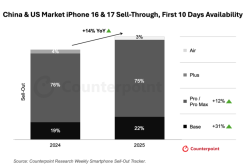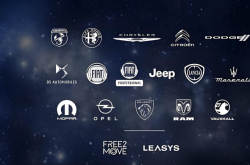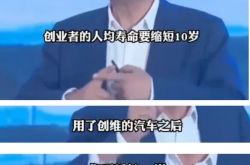Payment MCP: Completing the 'Last Mile' for Agent Monetization
![]() 04/17 2025
04/17 2025
![]() 728
728

In 2024, moments like "ordering coffee" and "sending red envelopes" became highlights for agents.
At the conference, Zhao Ming, former CEO of Honor, had his agent YoYo order coffee for everyone present. From opening the app to selecting and placing the order, the entire process was handled autonomously by the agent.
However, during the payment process, Zhao Ming himself had to step in. This led to a pressing question for developers:
When agents access various tools, the payment process—which determines developer revenue conversion—lacks sufficient convenient support.
With major vendors recently surging to open up MCP protocols in the past month, payment has finally embraced its own MCP protocol. This not only completes the 'last mile' for agent monetization but also presents an opportunity to usher in an upgrade in payment interactions through the integration of agents and smart hardware ecosystems.
How does the Payment MCP protocol solve monetization difficulties for developers?
Before the MCP protocol, invoking payment APIs was often time-consuming and labor-intensive for developers.
For developers, integrating a payment API into their agent often required adapting to various steps, including parameter naming, signature algorithms, callback mechanisms, etc., according to different payment service providers' designs.
After adapting to these processes, developers needed to write a set of charging logic code based on their agent's payment logic. For example, if a developer wanted to set a payment logic of 'recharge 1 yuan, deduct 0.01 yuan per use,' they needed to complete the following process themselves:
First, the agent interfaces with the payment system through code, generates a payment order, and processes the user's payment result. The system then executes different logic based on whether the payment is successful or failed. If successful, it executes the developer's payment logic code and writes the callback code to the payment system to confirm the payment.
Beyond the core logic, developers also had to handle various payment-related issues: such as users needing to query balances, request refunds, or developers wishing to track revenue, all of which required code.
For this reason, some agent platforms have developed payment plugins for developers to quickly set up payment schemes. However, compared to the various payment capabilities of the original platform, these plugins often only support simple payment logic designs, such as fixed membership and resource-based charging.
In contrast, the Payment MCP protocol developed by official platforms can reduce developers' coding workload by more than half.
Taking Alipay's recently launched Payment MCP protocol as an example, as the first MCP in China, Alipay has made 'code reduction' clear.
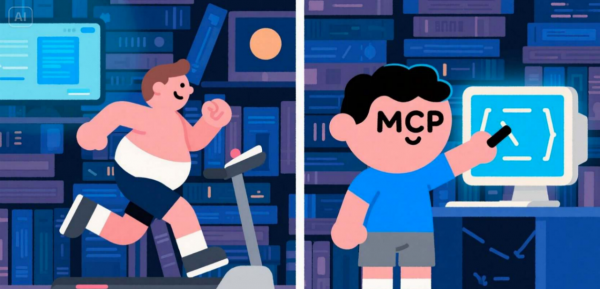
Currently, platforms such as Claude, Cursor, and Cline that support the MCP protocol can directly complete the MCP configuration. Alipay provides the configuration code on its official website, and the entire configuration process only requires developers to fill in various environment variables such as APP ID, private key, public key, etc., according to their needs, directly connecting Alipay's capabilities to the agent platform.
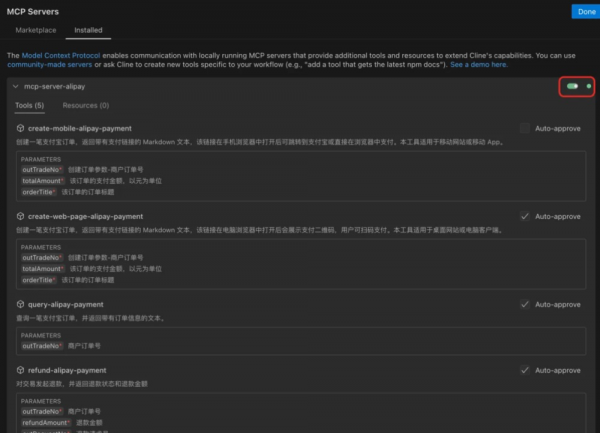
After simple configuration, MCP+agent can handle the remaining work for developers.
After integrating capabilities, developers do not need to write code themselves. Combining the agent's current planning abilities, developers only need to 'tell' the AI the payment logic they want in words, and the agent can invoke the corresponding tools and configure the payment logic by itself.
Taking the 'Poet Agent' given on the Alipay official website as an example. In the demo case, Alipay's set payment logic is a 'free trial' for the first time, with subsequent users able to recharge 1 yuan themselves, and the agent automatically deducts 0.01 yuan from the balance for each poem written.
Through the agent's planning ability, the developer only needs to input a prompt in the dialogue box, and the agent automatically disassembles this logic and generates the corresponding implementation steps:
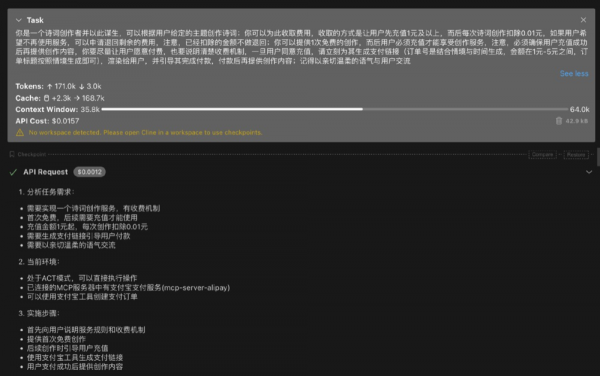
Issues that previously required complete sets of code to solve are now disassembled by AI in a few steps.
The payment platform also covers all aspects of agent payments with a single MCP.
From the currently provided information, Alipay has integrated five interfaces into the MCP protocol, not only including the core payment function but also functions such as creating order information, querying orders, invoking webpage/App payments, and querying refunds, all packed into a single MCP protocol.
In fact, a comprehensive payment process can not only help developers address various needs but also improve the success rate of user payment conversions with a complete payment function.
For example, refunds are a crucial safeguard for consumers. Only a complete set of payment services can give consumers the confidence to purchase and try, and also promote developers to gain more first-time users.
The steps for users to query payment status and request refunds are simplified into a new interaction form of 'dialogue completion' through the combination of agent+MCP.
Currently, whether querying orders or requesting refunds, users only need to directly dialogue and apply through the agent, and the agent can automatically complete the corresponding operations by invoking the MCP protocol. This eliminates the hassle of users manually searching for orders and refunds and lowers the threshold for user use.
It can be said that Alipay's MCP protocol not only launched quickly but also fully considered the needs of both developers and users.
MCP+agent, ushering in a major change in payment interactions
The global AI industry is engaging in an 'agreement war' for MCPs, and recently, this trend has gradually begun to brew in China.
Starting with large companies, they have sensed the opportunity for developer ecosystem expansion through MCPs.
In the face of a unified agreement, cloud vendors that rely heavily on open ecosystems are at the forefront. By integrating the various capabilities already available under their own large companies, those with the most comprehensive tool capabilities and the earliest protocol launches can harvest a batch of agent developers in advance during the window period.
On April 9, Alibaba Cloud put forward the slogan 'accelerating the last mile of AI applications' at the conference and announced that the Bailian platform fully supports MCP. Currently, Alibaba Cloud has integrated the capabilities of over 50 products, including Gaode Maps and Wuying Cloud Computers.
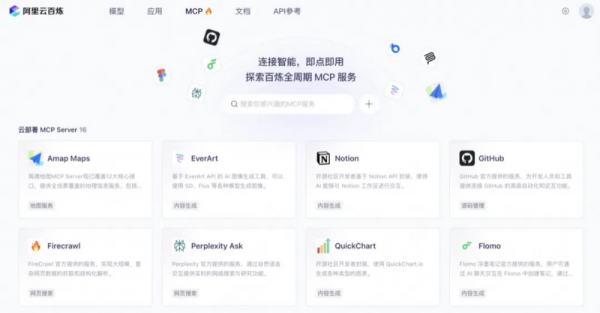
Tencent has also kept up with the pace of MCP layout. On April 14, Tencent Cloud announced that its large model knowledge engine has been upgraded to support the MCP protocol, allowing users to invoke MCP plugins through the platform when building agents. Currently, the platform has launched MCP plugins for Tencent Location Services, Airbnb, WeChat Reading, etc.
Behind the race to integrate the MCP protocol is the competition among giants for developer traffic and model invocation volume – whoever becomes the 'default interface' for agents will control the entry point for the next generation of AI applications.
For various products, MCP enables their product capabilities to be more easily connected to agents, becoming an opportunity to increase invocation volume and drive business closed loops.
Currently, domestic companies such as Alipay, Gaode Maps, and MiniMax have successively opened up MCP protocols within this month, allowing developers to invoke application functions according to their needs.
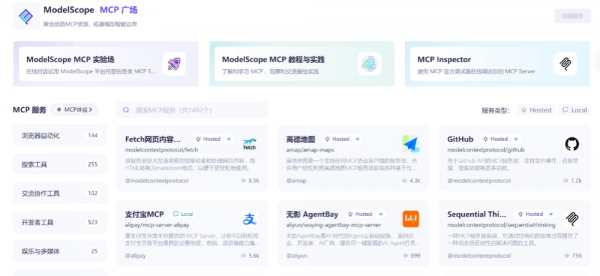
Why is MCP so popular?
Since Manus ignited market attention, many insiders have speculated that Manus uses the MCP protocol opened by Anthropic. Although this was ultimately proven false, MCP is a crucial cornerstone for 2025, witnessing the explosion of agents.
In the words of Anthropic, the founding company, it is equivalent to a 'USB interface' for AI applications. For agents that rely heavily on invoking tool capabilities, when various applications can be accessed based on the same protocol, it can truly give agents the highest degree of freedom to realize various complex tasks based on planning abilities: creating a travel guide based on maps, using WeChat Reading to extract key content from books to make a report...
Among tools for chatting, sending emails, geolocation, and various industries, Payment MCP is undoubtedly the most critical node among MCPs.
If MCP is the 'last mile' for connecting AI applications, then Payment MCP is the 'last mile' for agents to connect business closed loops.
Without Payment MCP, the payment process, which agents will inevitably involve, becomes 'rootless.' This underscores the necessity of Payment MCP in the early stages of MCP development.
When Payment MCP revitalizes the monetization issue for agents, following the upstream and downstream links of agents, payment interaction methods are once again standing at the crossroads of major changes.
Twenty years ago, Alipay emerged to solve the problem of delivery trust on e-commerce platforms and caught the wind of the mobile internet. During the rapid increase in smartphone penetration, people began to abandon credit cards and cash, gradually getting used to completing payments through their phones.
Today, from webpages to App ends, to various payment methods such as QR codes and facial recognition, along with the expansion of mobile payments, payment scenarios have gradually expanded to convenience stores, farmers' markets, and various other life scenarios, covering people's clothing, food, housing, and transportation. However, in terms of payment interaction methods, people mostly rely on smartphones to operate by themselves.
Under the MCP framework, agents are expected to break through mobile phone limitations through standardized payment interfaces.
Currently, agent adaptation scenarios have expanded to include various smart hardware such as cars, watches, and glasses, achieving multi-terminal compatibility. Agents that have opened up payment methods through Payment MCP will further expand the carrier range for mobile payments.
In addition, with the cooperation of agents and smart hardware, payment interaction methods will also usher in the possibility of 'completion with one sentence.'
When agents take over mobile phones and act based on users' sentences such as 'order coffee' or 'send red envelopes,' with the integration of Payment MCP, payment transactions between humans and agents can also be completed through natural language. As mentioned above, completing automatic deductions and refunds with one sentence through agents will soon become a reality.
QR code payment changed the way of payment, while the MCP protocol constructs a payment ecosystem. Payment MCP is initiating a payment interaction revolution in the AI era through agents.


